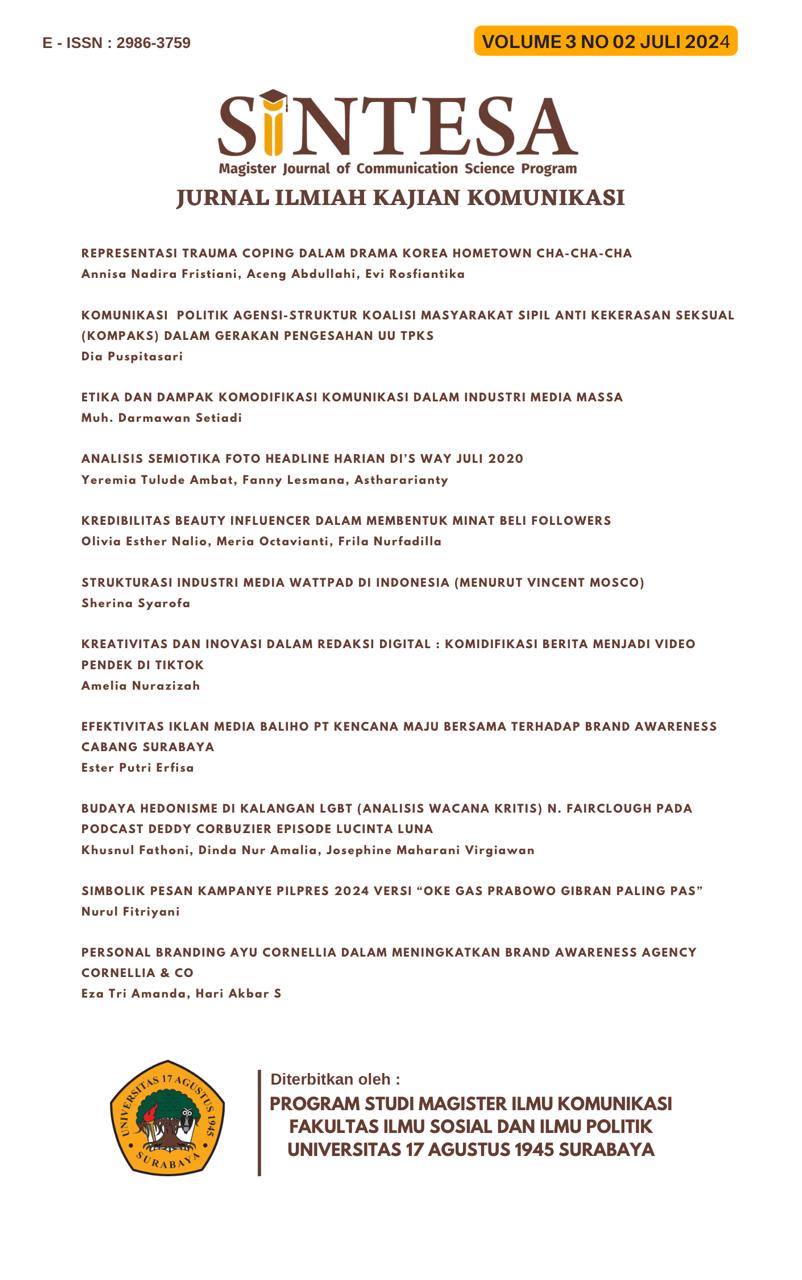KOMUNIKASI POLITIK AGENSI-STRUKTUR KOALISI MASYARAKAT SIPIL ANTI KEKERASAN SEKSUAL (KOMPAKS) DALAM GERAKAN PENGESAHAN UU TPKS
Komunikasi Politik Agensi-Struktur Koalisi Masyarakat Sipil Anti Kekerasan Seksual (KOMPAKS) dalam Gerakan Pengesahan UU TPKS
Abstract
The community has an important role in the legislative process for the Prevention of Sexual Violence Crime Act (UU-TPKS). Various elements of society who are members of the Civil Society Coalition Against Sexual Violence (KOMPAKS) movement are actively carrying out political communications that undermine the ratification of the TPKS Law. Actors in the KOMPAKS movement consist of various civil society organizations (CSOs), student organizations, and academics (individuals and groups). This research aims to analyze political communication that occurs in the KOMPAKS environment and create a dialectical relationship between actors and social structures. Antonio Giddens' Structural Theory as an analytical tool. The method used in this research is the KOMPAKS case study. However, this research has limitations because it only focuses on observing the monitoring process of the TPKS Law carried out by KOMPAKS as a form of civil society movement. The research results show that (1) political communication occurs through the connectedness (duality) of KOMPAK's agent structure, and (2) KOMPAKS is able to overcome internal and external challenges in the process of forming the TPKS law. KOMPAKS' internal political communication challenge is coordination between KOMPAKS members, and the external political communication challenge is discussion of the contents of the TPKS law which is considered LGBT-friendly.
Keywords: Communication; Political; Woman; Movement; KOMPAKS











